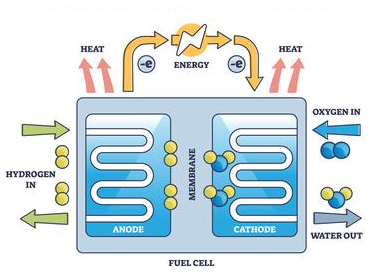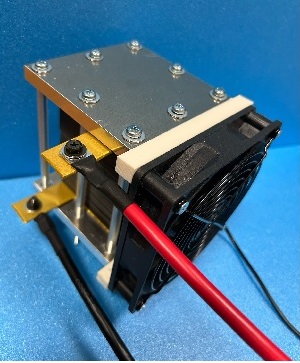How lithium ion battery Works:

A lithium-ion battery is a type of battery that is storing energy through the passing lithium ions between anode and cathode within a battery cell. During discharge, lithium ions move from the anode to the cathode, generating an electricity. During charging lithium ions moving back from the cathode to the anode. There are 4 components in a lithium ion battery, anode, cathode, separator and electrolyte. These 4 components are packed in a laminate pack or steel container.
What is PEM Fuel Cell?

A Polymer Electrolyte Membrane Fuel Cell (PEMFC) uses the chemical energy of hydrogen fuels to cleanly and efficiently produce electricity. Hydrogen is the fuel, the only product is electricity, water and heat are byproducts. Fuel cells are unique in terms of the variety of their potential applications; PEMFC uses hydrogen fuels and can provide power for systems as large as a utility power station, vehicles and as small as a laptop computer.
Benefits of Fuel Cell
Fuel cells have several benefits over conventional combustion-based technologies currently used in many power plants and vehicles. Fuel cells can operate at higher efficiencies than combustion engines and can convert the chemical energy in the fuel directly to electrical energy with efficiencies capable of exceeding 60%. Fuel cells have lower or zero emissions compared to combustion engines. Hydrogen fuel cells emit only water, addressing critical climate challenges as there are no carbon dioxide emissions. There also are no air pollutants that create smog and cause health problems at the point of operation.
How Fuel Cells Work ?

Fuel cells work like batteries, but they do not run down or need recharging. They produce electricity and heat as long as fuel is supplied. A fuel cell consists of two electrodes—a negative electrode (or anode) and a positive electrode (or cathode)—sandwiched around an electrolyte. A fuel, such as hydrogen, is fed to the anode, and air is fed to the cathode. In a hydrogen fuel cell, a catalyst at the anode separates hydrogen molecules into protons and electrons, which take different paths to the cathode. The electrons go through an external circuit, creating a flow of electricity. The protons migrate through the electrolyte to the cathode, where they unite with oxygen and the electrons to produce water and heat. Polymer electrolyte membrane (PEM) fuel cells are the current focus of research for fuel cell vehicle applications.






